
- Home
- Stud Dogs
Some of our most popular Stud Dog Breeds:
- Puppy Litters
- Dog Services
- Dog Breed Profiles
- Blog
- Contact Us
Samoyed Breed Profile
- Breed Profiles
- Samoyed
- Sep 18
- Share post
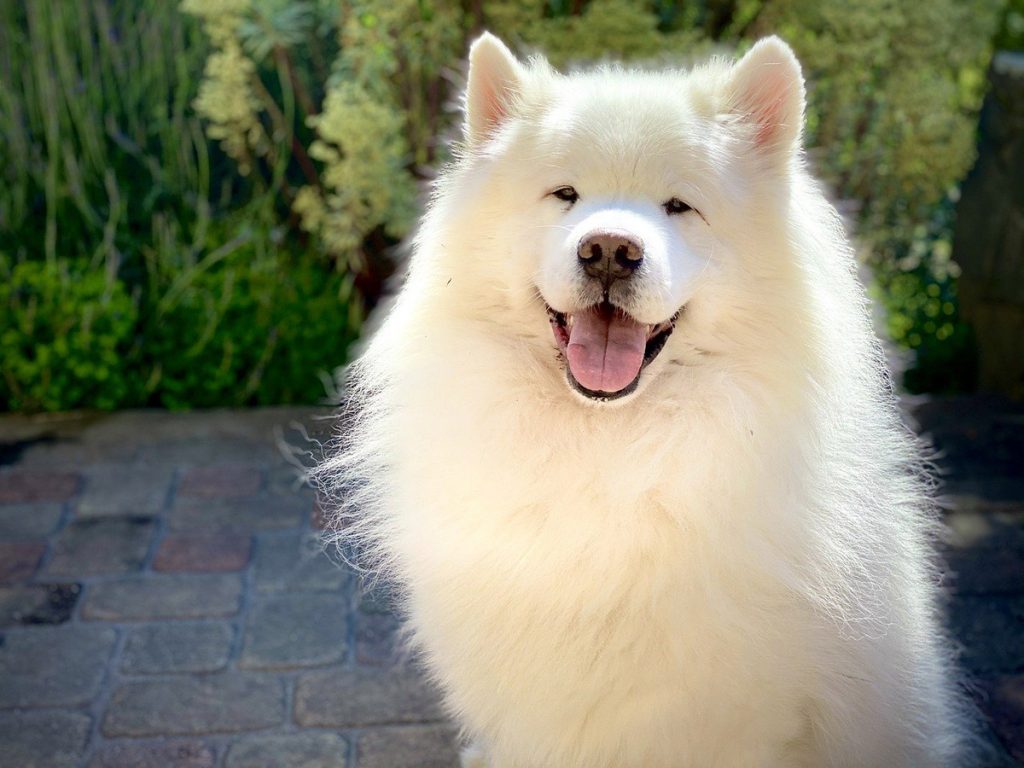
The Samoyed is known as ‘the dog with the smile’ due to the shape of its mouth. It lives up to its reputation, as this dog is good-natured and makes for an excellent family pet. The lack of aggression in this breed means that Samoyeds are safe around children and other dogs, although this does rule them out as guard dogs. Samoyeds do not have a natural odour, and unusually their fur has a texture similar to angora. Having been bred originally in the cold climate of Siberia, the Samoyed is most comfortable in cooler weather, and can withstand temperatures as low as -50C, although they can withstand warmer weather if necessary.
Typical Samoyed Facts
Height:
Dog: 21-24 inches (53-61cm)
Bitch: 19-21 inches (48-53 cm)
Weight:
Dog: 45-65 lbs (20-29 kg)
Bitch: 35-50lbs (15-23 kg)
Average Litter Size: 4 to 6 puppies
Life Expectancy: 12 to 14 years
Good with Children: Yes
Kennel Club Classification: Pastoral
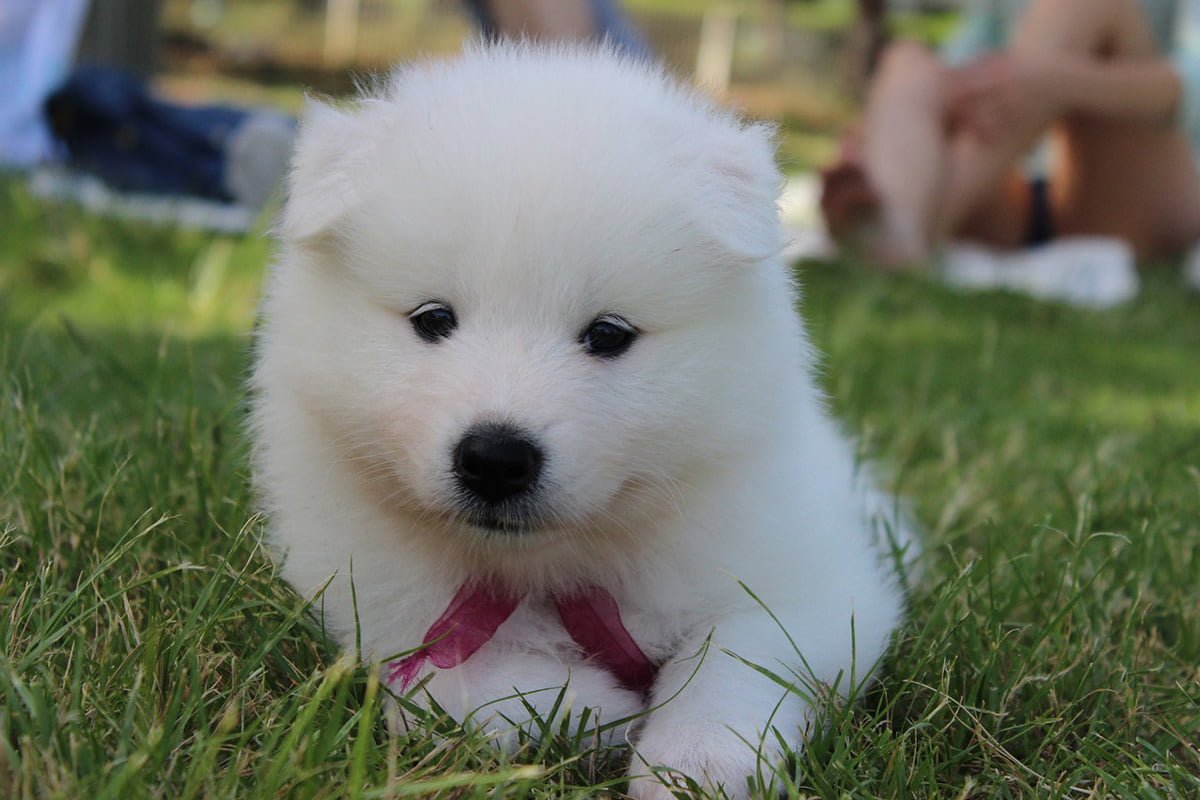
Colour of a Samoyed
Samoyeds can be white, white and biscuit, or cream, and it’s not uncommon for dogs of this breed to have silver tips to their outer coat. The Samoyed’s nose is interesting, as it can change colour from black to pink depending on the temperature of the weather – in colder weather, the nose appears pinker. The colour of a Samoyed’s nose can also change as the dog ages.
Grooming a Samoyed
A Samoyed has a thick double coat. The undercoat is soft to keep the dog warm in cold climates, whereas the outer coat consists of rough, long hair. Brushing a Samoyed daily is important as this breed is very prone to shedding, and this is best carried out after their daily walk, as the dog may pick up dirt, leaves or small twigs in their fur when they are outside. A comb with rotating teeth is advisable, as it doesn’t catch on tangles. Being a light-coloured breed, mud shows up easily on Samoyeds, and so occasional baths are necessary, but don’t forget to dry thoroughly. Make sure to keep nails trimmed and teeth regularly brushed.
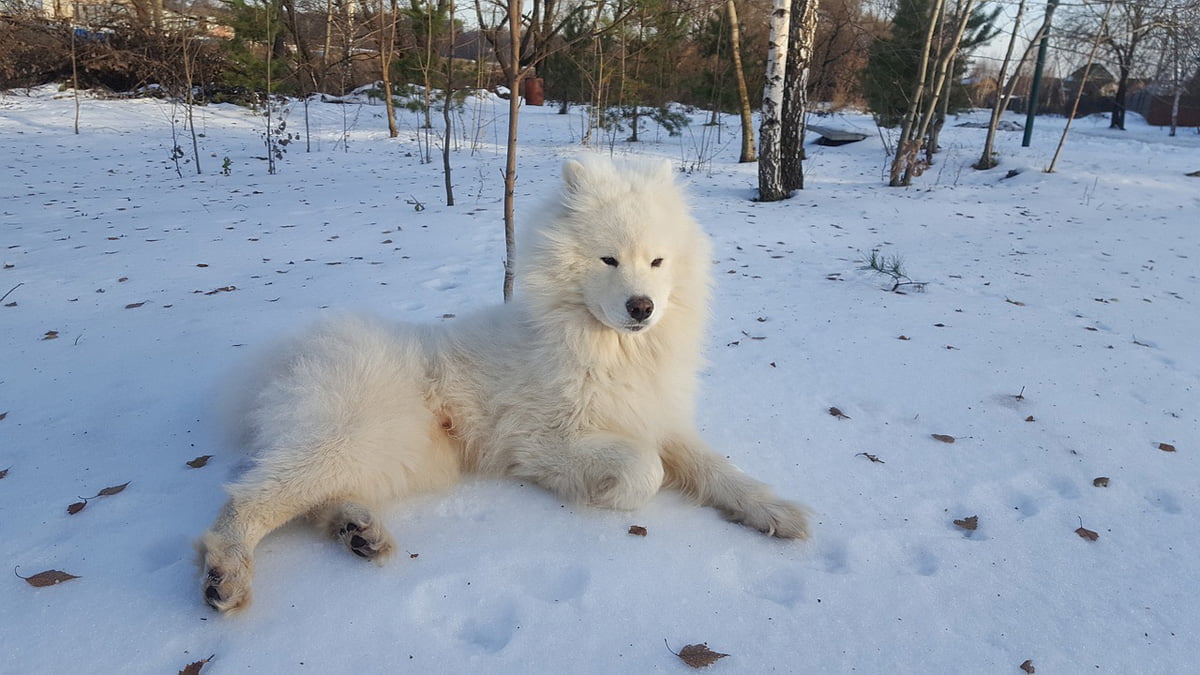
Samoyed Common Ailments/Health Issues
The gene pool for Samoyeds tends to be quite small, so hereditary health complications can occur in this breed. To minimise this risk, it’s important to ensure that both parents are healthy, so be sure to check the family history of the puppy. Some important ailments to watch out for in Samoyeds are hip dysplasia, diabetes, cancers, patellar luxation, kidney diseases, some heart conditions, hypothyroidism and eye problems, although many of these diseases are treatable.
Temperament of a Samoyed
Samoyeds are friendly dogs with affable personalities. As they were bred to live alongside people, Samoyeds are best suited to companionship, and are devoted to their human families. This breed tends to be unhappy if left alone for long periods of time, so they are best suited to owners who have plenty of time at home.
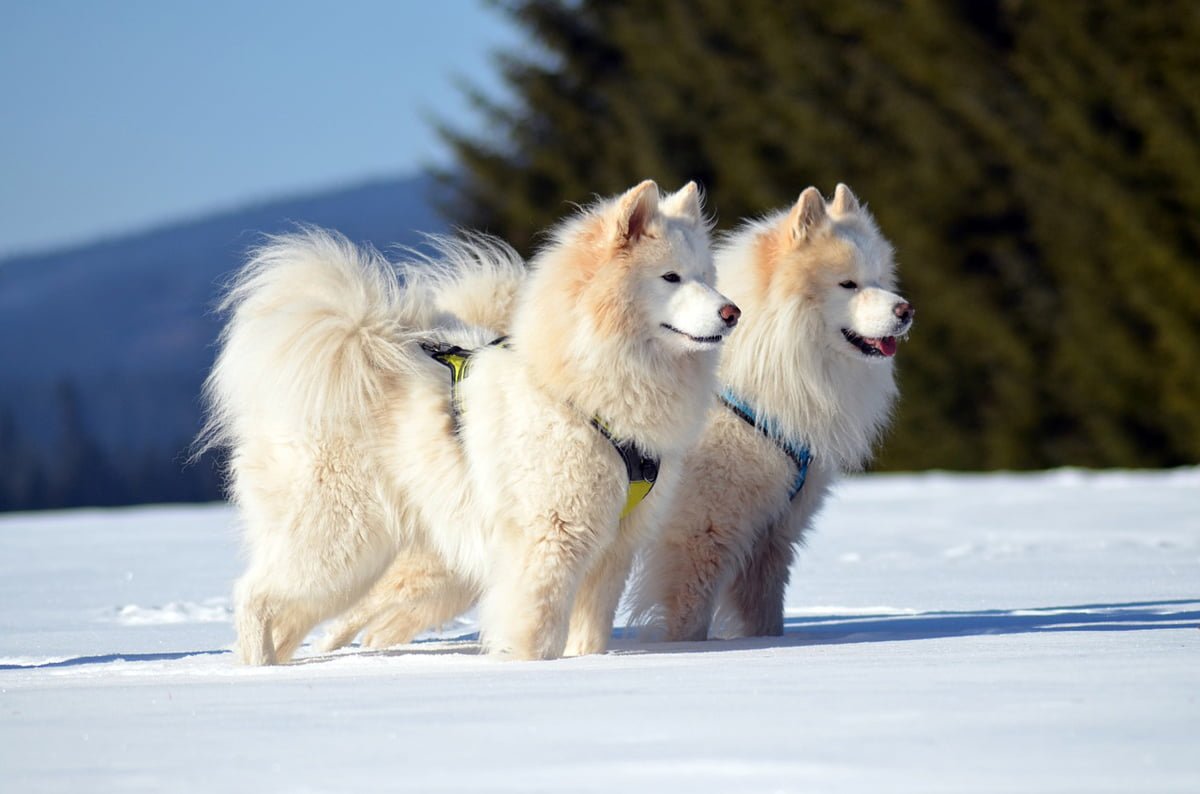
Training a Samoyed
The best advice for training a Samoyed is to start when the dog is a young puppy, as this is when habits are formed, and bad habits will be harder to correct as the dog grows older. The temptation to dig is quite strong in Samoyeds, so it’s important to curb this behaviour from a young age if you don’t want holes in your lawn. The Samoyed is an intelligent breed, but they do have an independent streak, so you must remember to be patient and consistent. Training should be kept interesting, and they respond well to vocal encouragement and praise.
Exercise for a Samoyed
Samoyeds are energetic dogs, and as they are an intelligent breed, they require both physical and mental stimulation to keep their mind and body healthy. A brisk daily 60-minute walk is the minimum essential exercise for a Samoyed, but this can be interjected with brief jogging sessions for an extra kick. As Samoyeds don’t like to get bored, try different routes on occasion to keep things interesting. Uphill walks will add resistance, which is good for a Samoyed’s muscles. This breed also enjoys vigorous play sessions, such as fetching a ball or catching a frisbee.
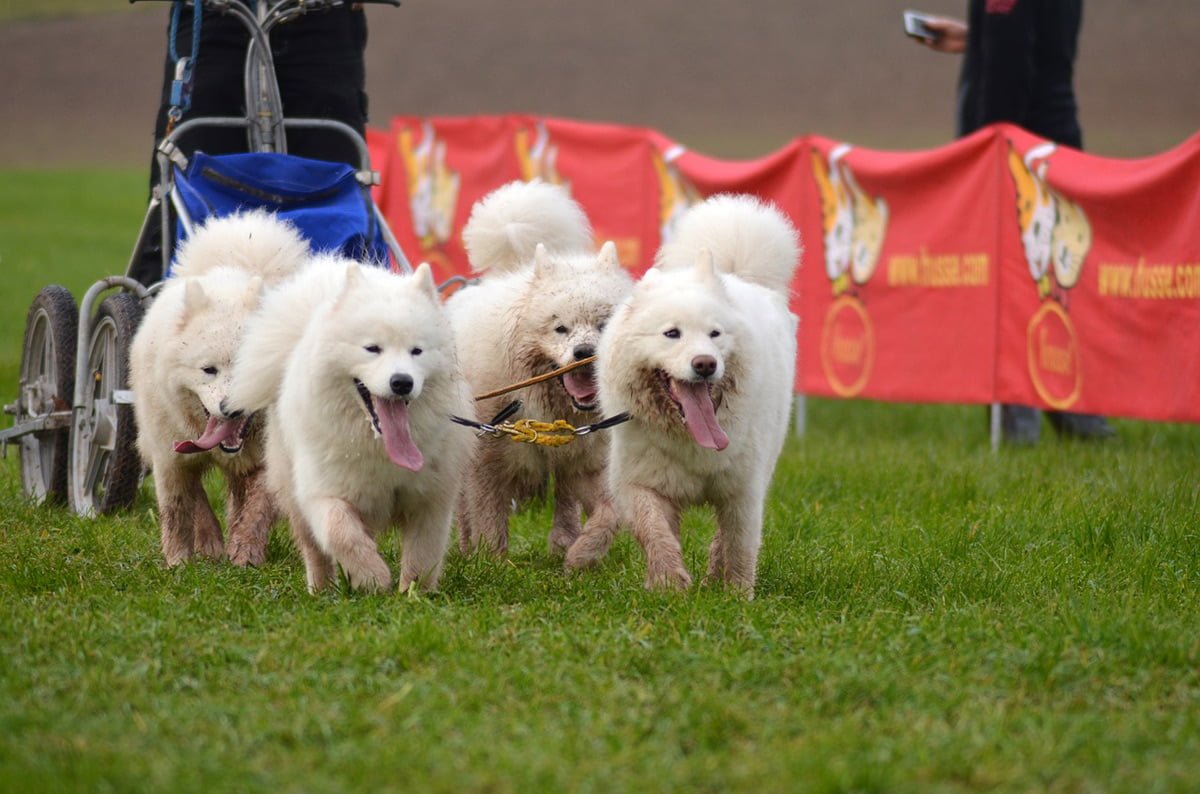
History of the Samoyed
Samoyeds are one of the oldest breeds of dog in the world, dating back to over 3,000 years ago. They originated in the Siberian regions of Russia, and are one of several types of dog known as spitz breeds, which include the Siberian Husky, the Pomeranian and the Keeshond, among others, as well as some now extinct breeds, such as the Sakhalin Husky.
Spitz dogs are particularly well-adapted to live in cold climates. Most spitz breeds, including Samoyeds, have warm waterproof undercoats, making them hardy and resistant to even the lowest of temperatures. Samoyeds have a particularly useful physical trait of the trademark “smile”, which serves the purpose of preventing any drooling, as saliva would freeze in the frigid Siberian winters, which have an average temperature of -25C and last for many months.
The name Samoyed stems from the peaceful native nomadic Samoyede people of this region, who originally kept Samoyed dogs to assist with reindeer herding, sleigh pulling and to act as companions and protectors of their families. Their fur was used to make clothing for the Samoyede people, thanks to its soft and warm hypoallergenic properties.
The first Samoyed to be brought to England from Arkhangelsk, in the north of western Russia, was a puppy named Sabarka in 1889. The breed quickly became a favourite of Alexandra of Denmark, wife of England’s King Edward VII.
A team of 33 Samoyeds accompanied explorer Robert Scott to the Antarctic in 1911. However, despite the dogs’ hardy coats, Antarctic temperatures and surfaces are more extreme than those in the Arctic, and the dogs were not accustomed to such harsh conditions. In addition, their tails had been docked before the journey, which proved to be a tragic mistake as all of the dogs perished from pneumonia as a result.
The Samoyed was accepted by the UK Kennel Club in 1912 under the name Samoyede, which was later changed to Samoyed in 1923. The breed is still today a popular companion dog in many countries.
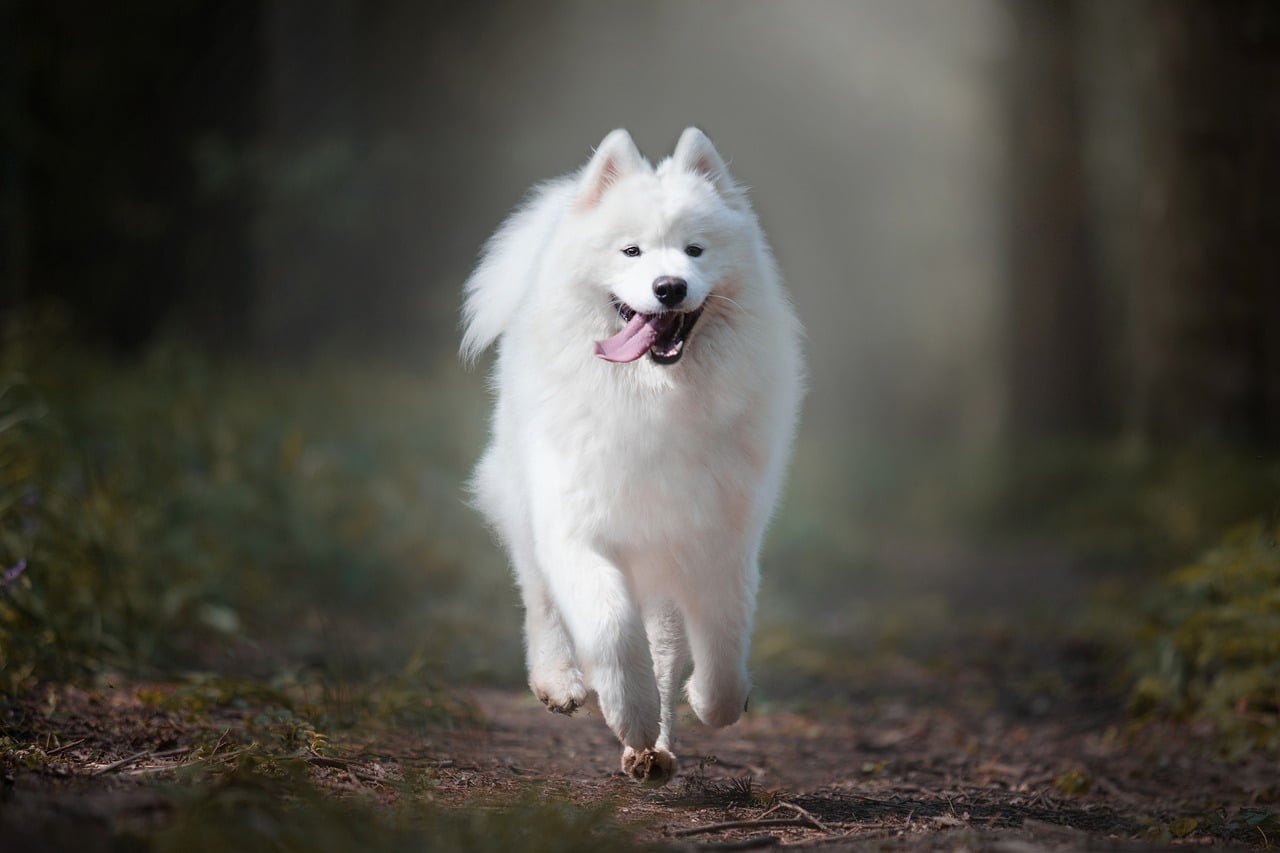
Famous Samoyed dogs
Maya the Samoyed, also known as ‘Maya the Polar Bear’, is an Internet star, with 1.9 million Instagram followers, and 1.74 million YouTube subscribers.
Samoyed Stud Dog Listings
A dog owner since the early 80s, after convincing his parents to buy a Yorkshire terrier named Sadie, Darren created Dream Dogs so dog owners could find the best dog related information on the Internet.